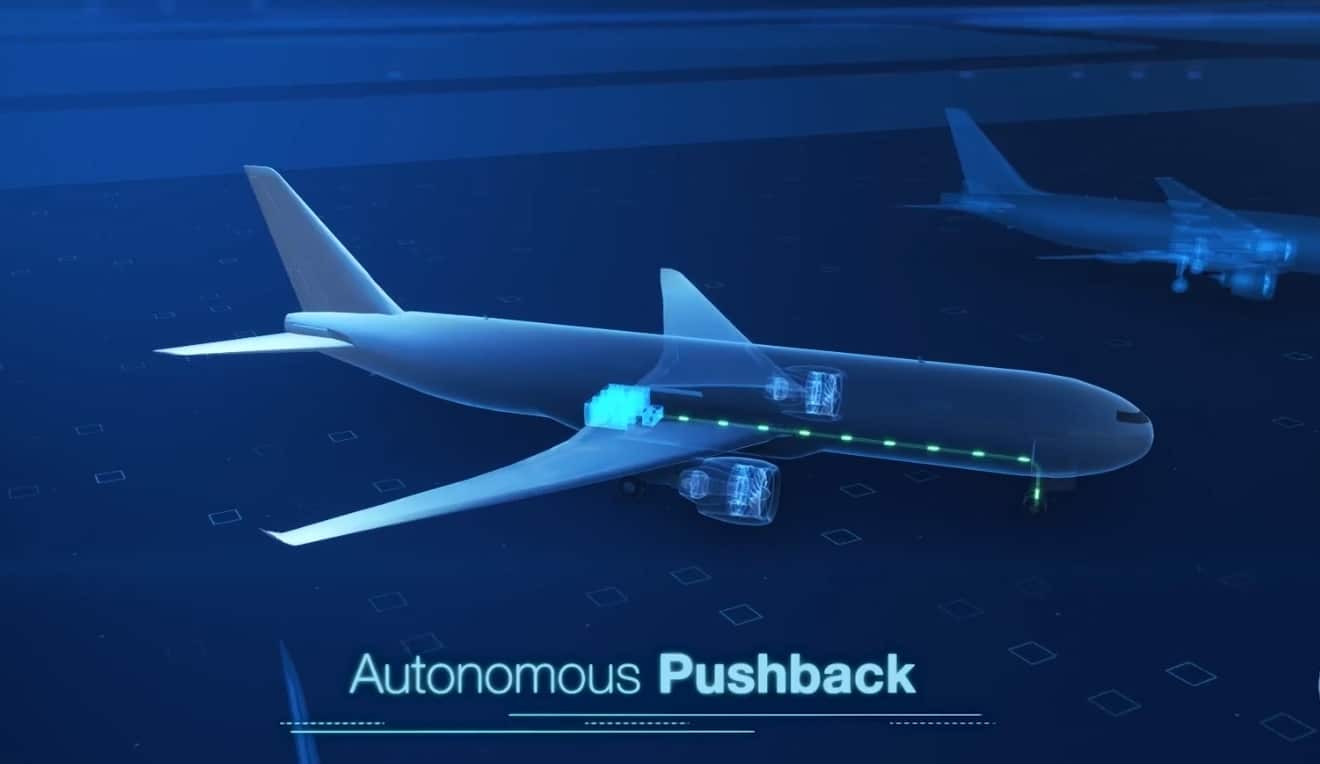Aerospace
Airbus to Introduce autonomous pushback for Future Hybrid aircraft.

Pushback is crucial for the aircraft since it enables them to reverse. since airplane lacks external power to accomplish it. But, Airbus might stop needing the pushback trucks to perform that function in the future.
The nose gear motor, which will boost the electrical power to do so, will enable one of the future Airbus aircraft, which is powered by a hybrid electric, to pushback itself without the assistance of a pushback vehicle. As soon as the last aircraft has finished pushing back, the same electric energy fuels the turbines, which then run the propeller and generate enough thrust to move the aircraft forward.
At Airbus, hybrid electric power can cut CO2 emissions from airplanes by up to 5%. Although they are often lighter than fixed-wing aircraft, helicopters could account for as much as 10% of the total. Airbus is leading a cross-industry effort to make hybridization a reality because it represents a significant milestone in the aircraft industry’s decarbonization path.
A variety of innovative solutions that combine novel fuel types and emerging technologies are needed to decarbonize flight. Hybrid-electric propulsion is one such option that can increase the energy efficiency of all aircraft classes.
A single mechanical power source powers the propeller or fan in a serial architecture. Several sources of power exist besides batteries. Alternatives exist, such as hydrogen fuel cells. In any instance, dispersed propulsion is made possible by the propeller being always driven by an electric motor.
This #WorldEngineeringDay, we’re celebrating ? the work of our talented #TeamAirbus engineers who are preparing the future of aviation by developing, testing and maturing #hybridisation. Watch the video below to find out more ?.
? https://t.co/lNpyKuiAge pic.twitter.com/yBTZwD14le— Airbus (@Airbus) March 4, 2023
As far as hybridization is concerned, this is serial architecture’s biggest advantage. But it means adding weight in the shape of a generator, to convert mechanical power to electrical power.
In a parallel architecture, the gas turbine sometimes operates below peak efficiency. However, a smaller and lighter electric motor is enough to meet the requirements. So a parallel architecture is better suited to hybrid applications. What about the battery that powers the electric motor sitting within it?
Airbus Charging options
Whatever the technology, batteries need to be charged. For commercial aviation there are three options: swapping depleted units for new ones on the ground; or installing charge points at the gate, potentially using renewable energy. The latter requires investment in infrastructure but in the long term, this would be offset by fuel savings.
Thirdly, where ground infrastructure is lacking, the aircraft’s engines could recharge the batteries during the cruise phase of a flight. “The reality could well be a mix of all three,” says Segura, “depending on individual airline and airport choices.”
Read more: Click

Aerospace
Boeing Transfers Rocket Stage to NASA, Paving Way for Human Moon Mission

Boeing has achieved a significant milestone by providing NASA with the second core stage of the Space Launch System (SLS) rocket.
This crucial component, crafted at NASA’s Michoud Assembly Facility (MAF), is set to propel the Artemis II crew into lunar orbit, marking humanity’s return to deep space after a 50-year hiatus.
The monumental Boeing-built rocket stage, the largest element of the Artemis II mission, will embark on a journey aboard the Pegasus barge, traveling 900 miles to NASA’s Kennedy Space Center.
Comparison of two legendary aircraft B777x vs B747 aircraft:Click here
Upon arrival, it will be meticulously integrated with other essential Artemis II components, including the upper stage, solid rocket boosters, and NASA’s Orion spacecraft within the iconic Vehicle Assembly Building. This intricate integration process is a vital step toward the eagerly anticipated Artemis II launch, slated for 2025.
“Boeing-built products helped land humankind on the moon in 1969, and we’re proud to continue that legacy through the Artemis generation,” remarked Dave Dutcher, vice president and program manager for Boeing’s SLS program. “Together, with NASA and our industry partners and suppliers, we are building the world’s most capable rocket and paving the way to deep space through America’s rocket factory in New Orleans.”
NASA, Lockheed Martin Reveal X-59 Quiet Supersonic Aircraft:Click here
The delivery of Core Stage 2 marks a significant achievement in the evolution of the SLS rocket. Towering over 200 feet and powered by four RS-25 engines, this core stage, coupled with two solid-fueled booster rockets, will generate a staggering 8.8 million pounds of thrust. This immense power is crucial to launching Artemis II and future missions into the vast expanse of space.
The SLS rocket stands unparalleled in its capability to transport both crew and substantial cargo to the moon and beyond in a single launch. Its extraordinary capacity will facilitate the delivery of human-rated spacecraft, habitats, and scientific missions to destinations including the moon and Mars, ushering in a new era of space exploration.
-

 Travel1 week ago
Travel1 week agoAir India to Expand US Operations with Three New Routes After a Decade
-

 Travel2 weeks ago
Travel2 weeks agoWhy We Should Avoid These Stamps in a Passport
-

 Airlines1 month ago
Airlines1 month agoInvestigations Reveal Fake Chinese Titanium in Boeing and Airbus Jets
-

 Tech4 weeks ago
Tech4 weeks agoChina’s CATL Plans 1,800-Mile Electric Plane Launch by 2027
-

 Airport3 days ago
Airport3 days agoTop 10 Largest Airports in the World by Size
-

 Aerospace4 weeks ago
Aerospace4 weeks agoChina’s Fighter Jets Turn Wings into Autonomous Drones
-

 Airlines4 days ago
Airlines4 days agoAir India Rolls Out A350s for Delhi-New York JFK and Newark Routes
-

 Defence3 weeks ago
Defence3 weeks agoBoeing Enhances Chinook with New Engines and Block II Upgrades at $96 Million







